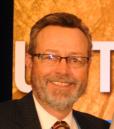At Times, Trash Talking Can Be a Good Thing
There was a lot of trash talking at the historic Crest Theater a block from the State Capitol Monday evening – and those in attendance are hoping there will be even more. The event, “Talking Trash @ the Crest,” was co-sponsored by CSAC and the Los Angeles County Department of Public Works. The goal was to promote innovative efforts to reduce waste in California, including comprehensive recycling programs and efforts to develop state-of-the-art conversion technology facilities.
Los Angeles County is at the forefront of new conversion technologies that have the potential to turn a liability (garbage) into an asset (energy). The County’s Director of Public Works Gail Farber and Assistant Deputy Director of Public Works Pat Proano were on hand to talk about the advancements their county is making in this arena. The problem with being on the cutting edge is that sometimes technology develops faster than the regulatory framework.
CSAC and Los Angeles County are working closely with various state agencies to improve this situation. We are also working closely with State Senator Ricardo Lara on SB 804, a bill that would make it easier to design, develop and permit solid waste conversion facilities in California. Conversion technologies use non-recyclable trash as fuel to make electricity or a low carbon fuel. There currently is no clear path to apply for and get a permit to build most conversion technology facilities in California. SB 804 will create that pathway by creating clear permitting and siting guidelines for waste conversion technology in law.
Monday evening closed out with a free screening of the award-winning documentary “Trashed,” starring Jeremy Irons. The film itself was eye-opening. While many of the statistics regarding the levels of trash we create were startling, the visuals were even more disturbing. Irons takes the audience on a worldwide trek – from Lebanon to England to Iceland … Vietnam to France to the Arctic. Each of these areas is being impacted significantly by trash. And the United States is no exception. The growing problem can be found on land, in the air and sea. The movie does conclude with a note of optimism, spotlighting how the City & County of San Francisco now recycles 75 percent of its trash. It’s a film worth watching – and an issue learning more about.
So, let the trash talking continue.












































